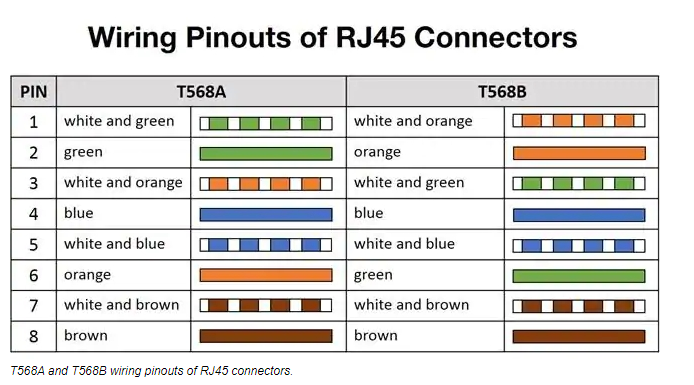RJ45 or 8P8C Connectors? Finding the True Ethernet Standard
RJ45 or 8P8C Connectors? Finding the True Ethernet Standard
RJ45 or 8P8C connector? If you’re at all involved in computer networking, you have undoubtedly heard both terms used interchangeably when referring to the connectors on the end of your Ethernet cables. But are the terms actually interchangeable, and if they are not, how did this incredibly common practice come to be? That’s what we’ll explore today.
Origins of RJ45
Let’s start with RJ45, perhaps the term most widely used to refer to Ethernet cables today. RJ stands for “registered jack,” and the true RJ45 connector was originally developed as part of the standardized telecommunication network interface for the purpose of connecting telephone networks. The connectors of the RJ platform were developed as much smaller and cheaper replacements to the older telephone installation methods of hardwired cords or bulky plugs.
With the advent of computer networking, a new but very similar connector was developed to carry out data transfer: 8P8C.
8P8C Confusion
8P8C refers to the array of pins, hence the name Eight Position, Eight Contact. In 8P8C connectors, each plug has eight positions that are spaced approximately 1 mm apart. Individual wires are then inserted into these positions. There are a variety of 8P8C connectors out there, with the modern RJ45 Ethernet connector being the most prevalent.
As a result of the close similarities, “RJ45” became the designated informal misnomer for any eight-pinned jack (8P8C modular connector) used in computer networking (Ethernet).
The differences between 8P8C connectors and RJ45 connectors are shown in the following diagram:

The connectors are not entirely compatible with one another because of the keying used in RJ45; 8P8C connectors can plug into RJ45 receptacles, but the inverse is not true. However, because the connectors resemble each other so closely in appearance, the groups and individuals who transitioned from telephone networking to computer networking started to mistakenly call the unkeyed 8P8C connectors “RJ45s” and the terminology quickly caught on.
Therefore, what most of the industry refers to as RJ45 connectors are in fact 8P8C modular connectors.
Today, almost all electronic equipment using 8P8C connectors will show documentation for RJ45 connectors, which is technically incorrect. This mistaken use of terminology is widespread throughout the industry, and though it is unlikely to change anytime soon, there really isn’t much reason for concern; nearly everyone is collectively making the same mistake, and those who are in the know more often than not simply use RJ45 to avoid confusion or argument.
An example of this is clearly visible in the “RJ45” Ethernet connectors. There are two RJ45 pinouts (T568A and T568B), and even though they are technically 8P8C connectors, it is very likely you will hear them strictly referred to as RJ45 connectors, and all documentation surrounding them will use the same terminology. As such, for the sake of clarity, we will refer to them as modern RJ45 connectors.
Now, the T568A and T568B pinouts mentioned above define the arrangement of the eight individual wires in the connector. These wiring layouts each have their own color convention, and following the convention is important to ensure electrical compatibility. Over time, T568B has become more popular. The differences in color conventions are shown in the chart below.

Few people are aware of the important distinctions between RJ45 and 8P8C, but understanding the history of these two connectors and how they formed the backbone for Ethernet connectivity will be integral to recognizing what the next widespread connectivity trend looks like.


